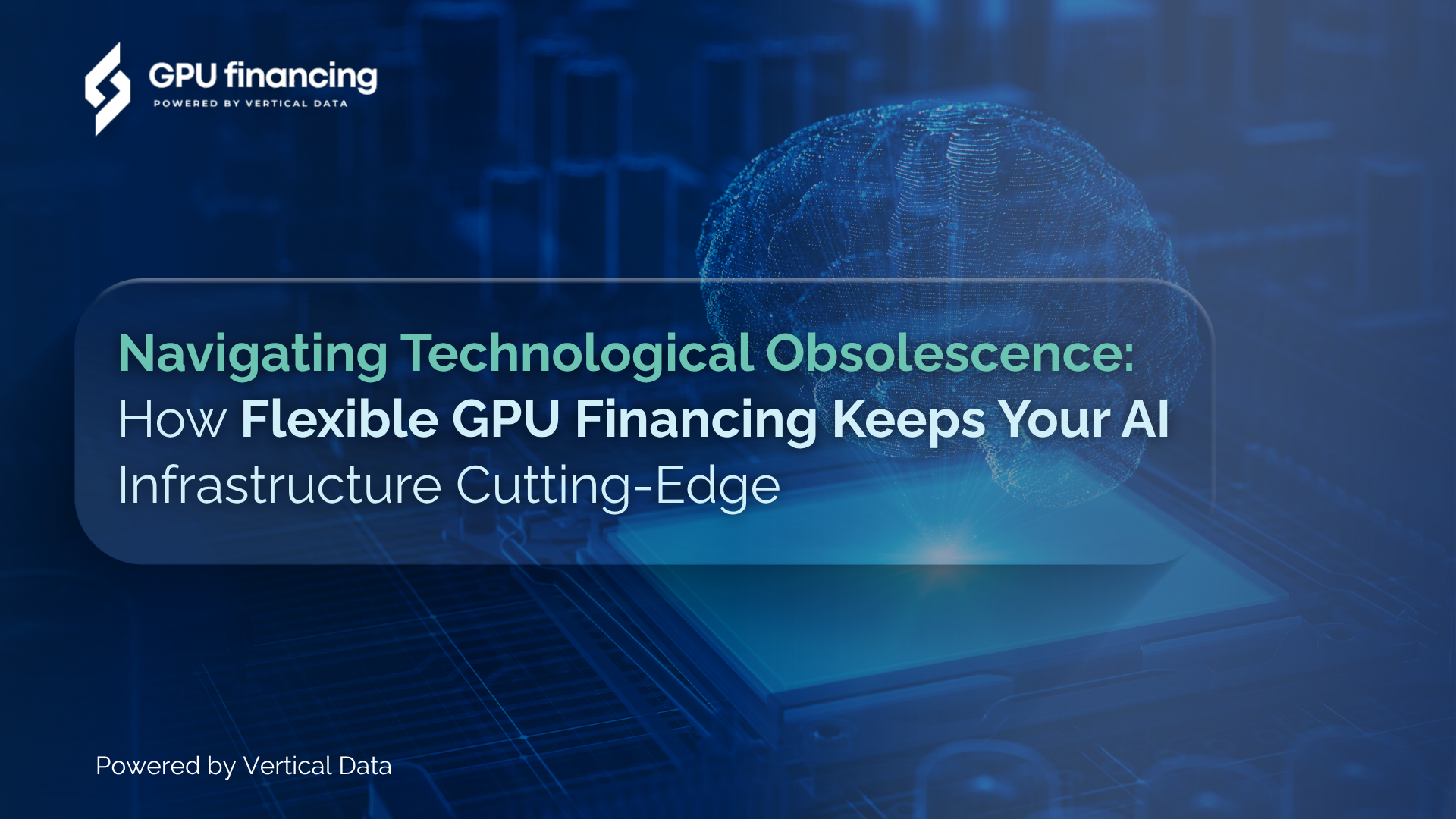The AI hardware landscape moves at a relentless pace. What represents cutting-edge performance today becomes yesterday’s technology faster than most enterprises can justify their capital expenditures. This acceleration is fundamentally reshaping how smart organizations approach AI infrastructure investment.
Consider this reality: Leading GPU manufacturers have shifted from 18–24-month release cycles to aggressive 12–18-month cadences, with plans to move toward annual releases of new AI hardware. Meanwhile, enterprise-grade AI GPUs cost upwards of $25,000 per unit, with fully AI-ready systems ranging from $400,000 to $600,000 per rack. For organizations building serious AI capabilities, the math becomes sobering quickly.
The traditional approach of purchasing AI hardware outright made sense when technology cycles were predictable and hardware remained competitive for five to seven years. But in today’s AI-driven world, that hardware faces functional obsolescence within two to three years. Organizations that invested heavily in previous-generation AI accelerators now find themselves choosing between continuing with suboptimal performance or writing off significant capital investments to upgrade.
The Obsolescence Acceleration Problem
The speed of AI hardware evolution has created what industry experts call “forced obsolescence.” Unlike consumer electronics where planned obsolescence drives upgrade cycles, AI hardware obsolescence is driven by genuine performance leaps that make older hardware economically inefficient for competitive AI workloads.
Data centers and cloud providers typically planned to retire and replace AI accelerators every three to five years. However, the performance gains between generations have become so substantial that many organizations feel pressure to upgrade every two to three years to maintain competitive AI capabilities. Next-generation architectures often offer 25-50% better performance for memory-intensive AI workloads, a difference that can translate directly to competitive advantage or disadvantage.
This acceleration places significant strain on traditional capital expenditure planning. CFOs who approved $500,000 AI infrastructure investments based on five-year depreciation schedules are now facing upgrade requests after just 18 months. The financial models that worked for traditional IT infrastructure simply don’t align with the rapid evolution of AI hardware.
The Hidden Costs of Ownership
Beyond the obvious purchase price, owning AI hardware in a rapidly evolving landscape carries hidden costs many organizations discover too late. Depreciation rates for AI hardware far exceed traditional IT equipment, with estimates suggesting 40-60% value loss within the first two years.
More critically, the opportunity cost of capital tied up in depreciating AI assets can be substantial. A $400,000 AI system purchased outright represents capital that could be allocated elsewhere while the organization accesses the same computing power through flexible financing solutions.
There’s also the risk of technological stranding. Organizations that invested heavily in specific AI architectures may find their hardware incompatible with newer AI frameworks or unable to efficiently run next-generation models. The cost of being stuck with obsolete hardware extends beyond the initial investment to include lost productivity and competitive disadvantage.
The Financing Advantage
Flexible GPU financing transforms the obsolescence challenge from a liability into a strategic advantage. Rather than committing massive capital to assets with uncertain useful lives, organizations can access cutting-edge AI hardware through structured financing that aligns costs with actual usage and business outcomes.
The financial benefits become clear when comparing total cost scenarios. Organizations can access high-performance GPU capacity through flexible arrangements that eliminate the risk of technological obsolescence while providing predictable operational expenses. Even for longer-term initiatives, financing provides flexibility to upgrade to newer hardware without writing off previous investments.
More importantly, financing enables organizations to stay current with AI hardware evolution without the financial shock of constant capital expenditures. When manufacturers release next-generation architectures, organizations with flexible financing can upgrade seamlessly, maintaining competitive AI capabilities without disrupting cash flow.
Strategic Flexibility in an Uncertain Landscape
The AI industry’s rapid evolution makes predicting future hardware requirements nearly impossible. Organizations that commit to specific hardware configurations through outright purchases often find themselves either over-provisioned for their actual needs or under-equipped for emerging opportunities.
Flexible financing provides the agility to scale AI infrastructure based on actual business requirements. Startups can access enterprise-grade AI hardware without massive upfront investments, while established enterprises can experiment with new AI initiatives without committing to permanent infrastructure expansion.
The Path Forward
As AI continues to reshape industries, organizations that thrive will be those that can adapt quickly to new technologies and opportunities. Flexible GPU financing isn’t just about managing costs, it’s about maintaining agility to compete where technological advantage can shift rapidly.
The choice between ownership and financing comes down to strategic priorities. Organizations that view AI infrastructure as a fixed asset may find themselves disadvantaged against competitors who treat it as a flexible capability that evolves with business needs.
In an era where staying current with AI technology can determine competitive success, flexible financing provides the financial framework to navigate technological obsolescence confidently, ensuring your AI infrastructure remains cutting-edge without compromising financial flexibility.
